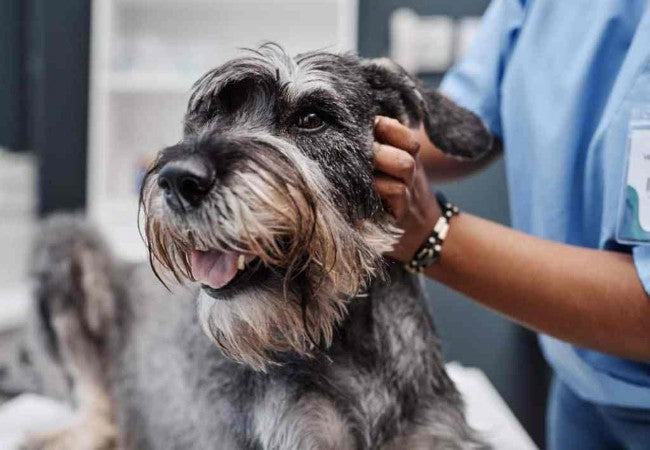Vet’s 2025 Guide to Cholelithiasis in Dogs – Gallstones Diagnosis, Treatment & Prevention 🐶

In this article
Vet’s 2025 Guide to Cholelithiasis in Dogs – Gallstones Diagnosis, Treatment & Prevention 🐶
By Dr. Duncan Houston BVSc
💡 What Is Cholelithiasis?
Cholelithiasis refers to gallstones—solid concretions of cholesterol, bilirubin, or minerals—forming within the gallbladder or bile ducts of dogs. These can be harmless or lead to serious issues like bile duct obstruction or infection.
⚠️ Who’s at Risk?
- Middle-aged to older dogs, especially small and female breeds
- Dogs with endocrine conditions (hypothyroidism, Cushing’s, diabetes) or lipid disorders
- Gallbladder dysmotility and bile infrequent emptying
🔍 What Causes Gallstones?
- Bile saturation with cholesterol, bilirubin, or calcium
- Chronic inflammation of the gallbladder or bile ducts
- Underlying congenital malformations in the bile ducts
🧩 Clinical Signs to Monitor
- Vomiting, lethargy, abdominal pain 🇦🇹
- Jaundice, fever, anorexia 💛
- Occasionally asymptomatic—discovered during routine ultrasound
📋 Diagnostic Approach
Cholelithiasis diagnosis involves:
- Physical exam—check abdomen, pain, jaundice
- Bloodwork—elevated liver enzymes, bilirubin, GGT, inflammation markers
- Ultrasound—stone detection, wall thickening, duct dilation
- X-rays/CT—less sensitive than ultrasound, but may detect mineralized stones
- Bile or liver biopsy—culture for infection
💊 Treatment Options
1. Medical Management
- Ursodeoxycholic acid (15–25 mg/kg q12h) to dissolve stones
- S-AME, vitamin E for liver protection and bile flow
- Antibiotics for bacterial cholangitis or cholecystitis
- IV fluids, low-fat diet, antiemetics as supportive care
2. Surgery (Cholecystectomy / Cholelith Removal)
Recommended if stones obstruct the bile duct, cause infection, or risk rupture. Surgery plus bile duct flushing/cholecystoenterostomy may be required.
- Poor surgical outcomes are rare; prognosis is good if managed promptly
- Laparoscopic options reduce recovery time
📉 Prognosis
- Medical therapy—good in stable cases; requires monitoring ultrasound, and labs
- Surgical cases—with prompt treatment, most dogs do well long term
- Complicated cases (rupture/infection)—carry a higher risk, but early intervention helps
🛡️ Prevention & Monitoring
- Routine abdominal ultrasound in high-risk dogs—e.g., small breeds, older age, endocrine disorders
- Manage concurrent disease (Cushing’s, thyroid, lipids)
- Low-fat diet, weight management, liver-support supplements
- Prompt veterinary care at the first signs of GI upset, jaundice, or abdominal pain
📲 Ask A Vet
- Ask A Vet – real-time vet advice if gallbladder issues or symptoms arise 📱
🌟 Real-Life Case Highlight
Case: Bella, an 8-year-old Miniature Schnauzer, displayed elevated liver enzymes on annual labs; ultrasound identified gallstones. She was treated medically with ursodiol, SAMe, antibiotics & diet change. Six-month follow-up showed resolved stones and normalized labs—no surgery needed! 🎉🐾
✅ Key Takeaways
- Gallstones are common in older, small, or endocrine-affected dogs
- Ultrasound and labs are crucial for early detection
- Treatment can be medical or surgical, depending on severity
- Monitoring and management ensure good long-term outcomes
- Support options from Ask A Vet, Woopf, and Purrz enhance care and prevention
📥 Get Expert Support Now
Concerned about your dog’s gallbladder health or noticing signs like vomiting, jaundice, or pain? Download the Ask A Vet app for on-the-spot guidance and live vet consultations. Visit AskAVet.com today! 🐾🩺






